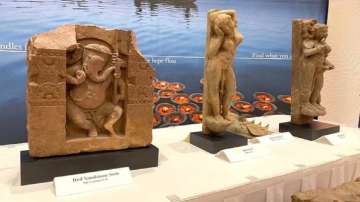A total of 324 antiquities have been brought back to India during the period between 2003-2023, the government informed Parliament on Thursday.
Union Culture Minister G Kishan Reddy said this in a written response to a query in the Rajya Sabha.
He was asked whether it is a fact that a number of stolen Indian antiquities have been brought back to India during the last two decades.
A total of 324 antiquities have been brought back to India during 2003-2023, according to the data shared by the minister.
In his response, he also informed the Upper House that a total of 291 antiquities have been retrieved since 2020.
In 2013, one antiquity was returned to India from France; while in 2023, two were returned from Australia, seven from the UK and 85 from the US, according to the data.
A stone sculpture of Nagaraja (the serpent king) was retrieved from Australia in 2020, among the 291 antiquities retrieved since that year.
Last month, Prime Minister Narendra Modi thanked the US government for returning 105 trafficked antiquities.
Responding to the tweet by the Indian Embassy in Washington D.C., Modi said, "This will make every Indian happy. Grateful to USA for this. These precious artefacts hold immense cultural and religious significance. Their homecoming is a testament to our commitment to preserving our heritage and rich history.”
The antiquities were handed over by US authorities to the Embassy officials at a ceremony held at the Consulate in New York on Monday. The process was undertaken as a follow-up to Modi's state visit to the US in June.
"105 trafficked antiquities, representing diverse regions and traditions of India, returning home! The antiquities, handed over by the US side as a follow-up to the historic State Visit of Prime Minister @narendramodi, date as far back as the 2nd century AD, and include notable cultural and religious heritage," the Embassy had said in a tweet on Tuesday.
Some of these antiquities include a 12-13th century marble arch from Rajasthan, a 14-15th century Apsara from Central India, a 14-15th century Sambandar from South India and a 17-18th century bronze Nataraja, also from South India.
With inputs from agencies
ALSO READ | UPI integration in feature phones: Enhancing financial inclusion and digital payments
Latest India News

